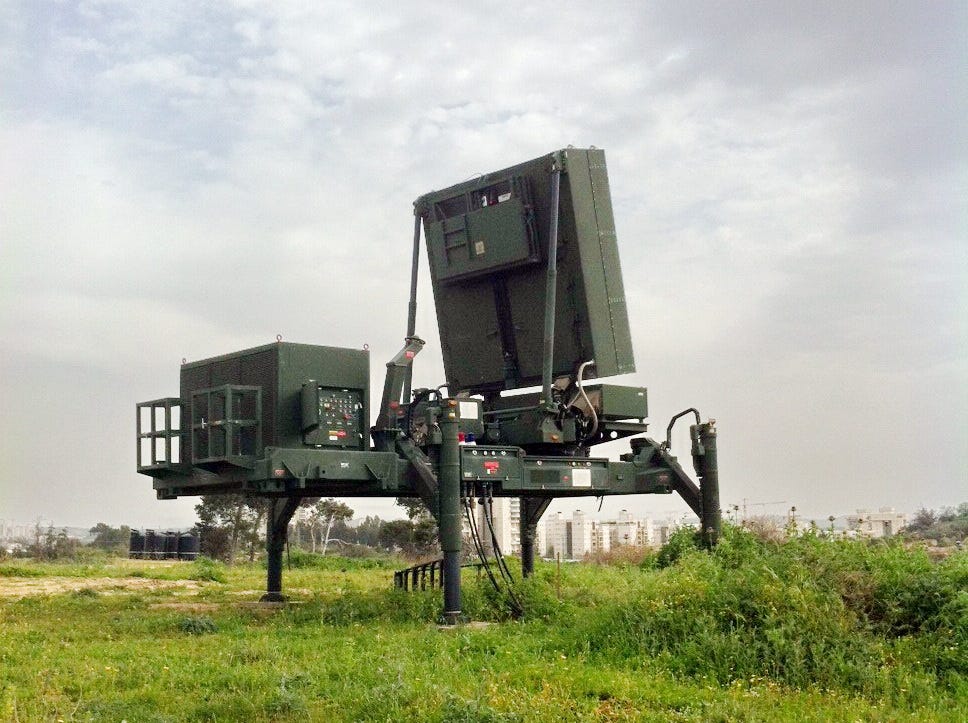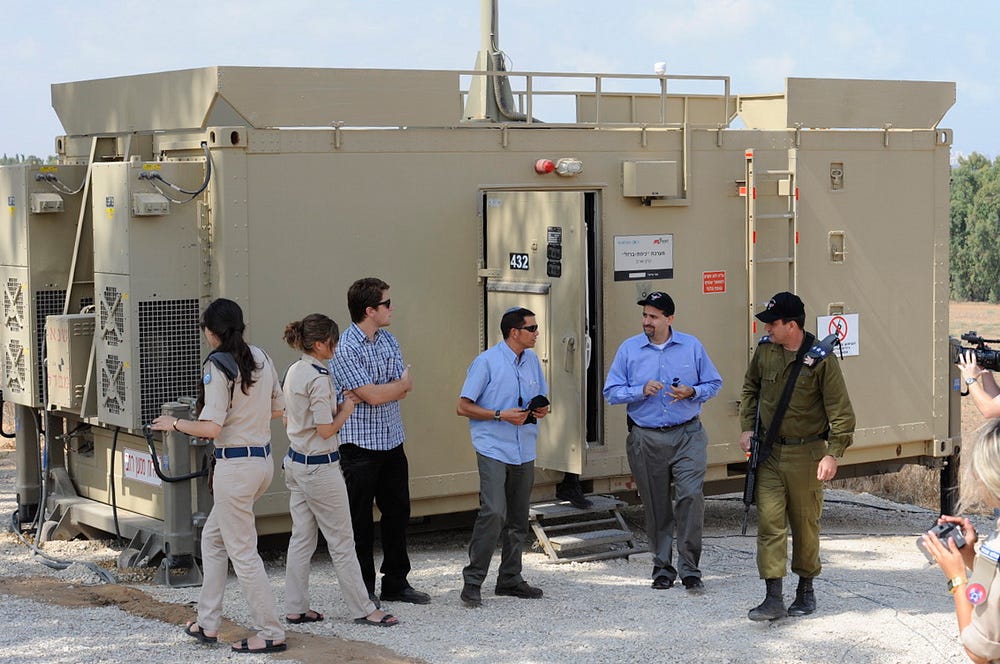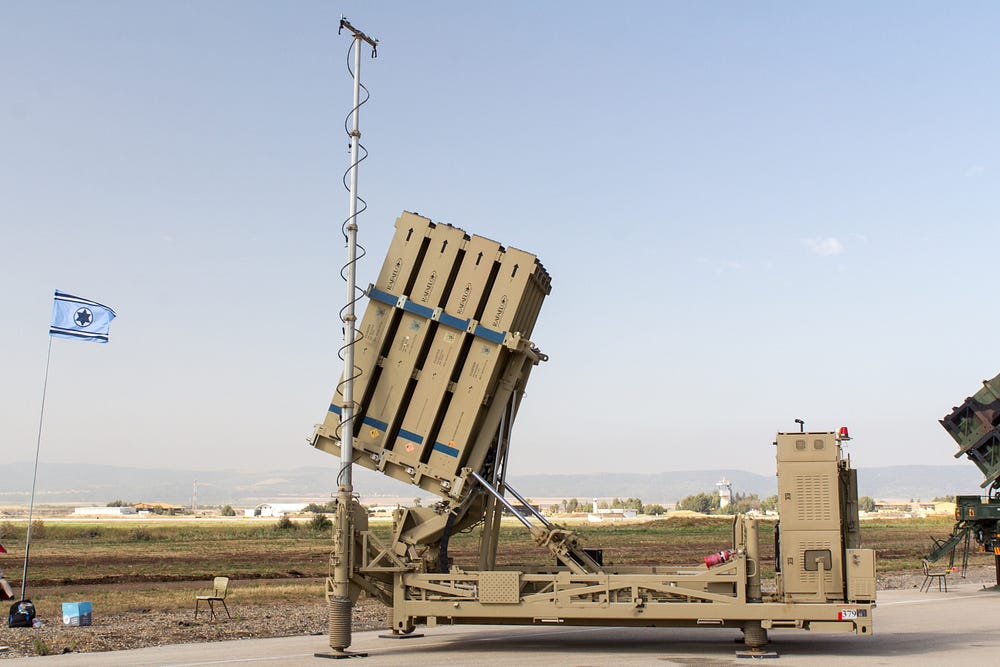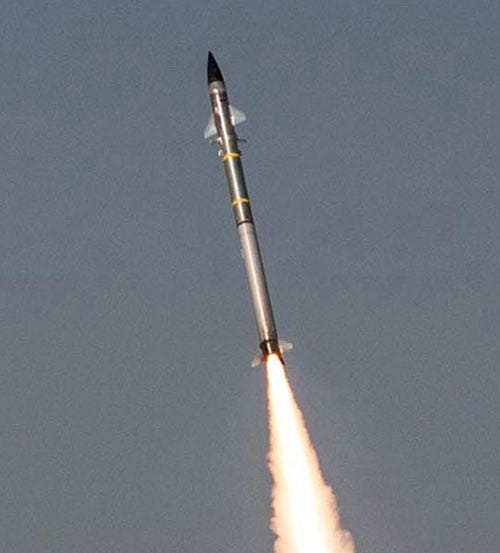Here's How the Rocket Defense System Works, and the Ways It Has - and Hasn't - Changed the Conflict
You’ve probably seen the videos: dark skies illuminated by exploding balls of light, resembling alien spaceships in battle, or a terrifying fireworks display accompanied by air raid sirens.

This is the perspective of Israel’s Iron Dome, the country’s aerial defense system used to intercept incoming short-range rockets. The escalating conflict between Israel and Hamas, the Palestinian militia that controls Gaza, has provided a new glimpse of the Iron Dome in action.
The Iron Dome, developed by Israeli firms Rafael Advanced Defense Systems and Israel Aerospace Industries with some US assistance, went operational in 2011. The Iron Dome, one of the world’s most advanced defense systems, employs radar to detect and destroy incoming threats before they cause harm.
As per Israeli officials, it is about 90% effective at blocking short-range rockets used by Hamas and other groups in the region. The Iron Dome provides Israel with what Jean-Loup Samaan, a research affiliate with the Middle East Institute at the National University of Singapore who has studied Israel’s missile defense, refers to as an “insurance policy” — it reassures citizens while protecting against loss of life and property damage.

How does it work?
The system’s origins can be traced back to Israel’s 2006 war with Lebanon’s militant Hezbollah movement, when thousands of rockets were launched into Israel, causing massive damage, mass evacuations, and dozens of deaths. Following that, Israel announced the development of a new missile defense shield.
Given the low precision of shooting artisanal uncontrolled projectiles, the Iron Dome system’s designers adopted the concept of selective interception of targets. When a projectile is detected, the Iron Dome Missile System battle control room classifies it and evaluates the threat based on an analysis of its trajectory and estimated impact area. Only if the munition poses a threat to the protected locality or territory is a command to intercept and destroy the target issued. When fired at a medium-intensity city, one system, according to the designers, can provide medium-size city missile defense.
The chance of intercepting a single target is up to 90%. The target is destroyed at a great distance, which reduces the risk of collateral damage to the defended object, even during a chemical munitions attack. The system works in any weather, including low cloud cover, rain, dust storms, and dense fog. One Iron Dome battery can defend a 150-square-kilometer area against missiles. The battery can operate autonomously or as part of a multi-tiered missile defense system.
It consists of three components, as is typical of most air defense systems: radar that detects the incoming rocket; a command-and-control system that handles that information and then triggers the interceptor — essentially a missile whose role is to destroy the other rocket.
1: Radar (EL/M-2084)

The ELM-2084 is a ground-based mobile 3D Active electronically scanned array (AESA) multi-mission radar (MMR) family developed by ELTA Systems Ltd (ELTA), an Israel Aerospace Industries subsidiary. The radar can detect and track aircraft and ballistic targets, as well as provide fire control assistance for missile interception or artillery air defense.
In 2016, the Czech Republic signed a contract to buy 8 radars for $144m. This means the cost of one radar was nearly $14.25m in 2016. This is the biggest drawback still in this system as the cost is very much high compared to other radars. But, this is due to the greater advancement they have integrated into this radar than any other ever existed.
It detects the type of incoming rounds and sends that relevant data to the Iron Dome or David’s Sling, which intercepts the projectile. The system can also detect artillery and pinpoint the source of enemy artillery fire, as well as predict the trajectory and impact point for incoming artillery shells, missiles, and mortars within the friendly zone. Its equipped AESA enables it to create a 3D Air Situation Picture in real-time. To update the air picture and accurately track projectiles in flight, the physical radar rotates in response to incoming projectiles.
The ELM 2084 employs an S-Band radar capable of detecting up to 1 100 different targets simultaneously at a maximum range of 470 km. The radar system has high mobility capabilities that allow it to be moved quickly. The ELM 2084 also has remote operation capabilities, allowing it to be used from a distance.
The Radar’s primary missions are as follows:
- Detection and tracking of hostile ballistic projectiles, calculation of enemy launchers or artillery position
- Early warning — calculation of impact point for warning of civilians and military rear units.
- Friendly fire-ranging entails tracking friendly artillery and communicating corrections to the firing unit.
- Aerial surveillance entails detecting and tracking aircraft while maintaining a continuous aerial view.
- Control radar for air defense systems such as Iron Dome, David’s Sling, Skyhunter, and SPYDER-MR (Medium Range).
The radar has the following notable features:
- Technological advance Radar AESA
- Due to participation in a large number of interceptions, it has extensive operational experience.
- Interoperability with current battle management systems and a variety of interceptor missiles.
- The radar is advertised as being capable of processing all types of threats, including aerial and ballistic targets with low radar cross-section (RCS).
2: Command-and-Control System

The station is outfitted with cutting-edge technology for displaying the tactical situation, including high-resolution color displays, built-in diagnostic tools, and a simulator complex for training personnel. C-130 aircraft can transport the station.

3: Interceptor / Iron Dome launcher
Once the command center receives the data, the launcher will send the required number of missiles (Tamir missiles) and eliminate the incoming threats in the sky.

The Tamir missile from Iron Dome destroys incoming threats launched from ranges ranging from 4 to 70 kilometers. Tamir missiles are equipped with electro-optical sensors and steering fins, as well as proximity fuze blast warheads. The majority of Tamir missile components are obtained in the United States through the Raytheon Missiles & Defense supply chain.
In brief…

How they have obtained this much advancement?
In a single word, we can say Continuous engagement. Yes, every time there has been an operation with Gaza in the last decade, and the Israeli defense forces had to look into the experience they've got and have to rectify it as soon as possible before the enemies hit again. Being a country that has an active battleground made the matter so simple to improve the system to a great level.
What made it special?
The Iron Dome was costly to develop, but manufacturers claim it is cost-effective due to the technology it employs to distinguish between missiles that are likely to hit built-up areas and those that are not. Interceptor missiles are only launched by static and mobile units to shoot down anything deemed dangerous.
Simply, if an incoming rocket is expected to fall in a non-civilian spot or not classified field, a counter missile will not be launched. This intelligence made the system more unique than any other systems available.
Limitations of the system
So far, the system has performed admirably. When confronted with a barrage of projectiles, the system may become aware of its limitations. There is a ‘saturation point’ in the system. It is only capable of engaging a certain (unspecified) number of targets (1 100) at the same time. Additional rockets launched in a crowded salvo could breach defenses and cause damage. Several reports indicate that Hamas is developing mitigation strategies such as lowering projectile trajectories while also continuing to accumulate thousands of rockets with improved precision.
One of the system’s potential limitations is its inability to deal with very short-range threats, as estimates place the Iron Dome’s minimum interception range at 5–7 kilometers. Another factor is the high cost of interception. The interceptor missile costs between $40 000 and $80 000.

The system is designed to intercept specific projectiles, but it can be overwhelmed by a more capable adversary. This is why Hamas is sending thousands of rockets even in lower ranges that sometimes resulted in accidents and miss falling of the rockets in Gaza. Also, Hezbollah involves 1 000–1 500 rockets per day fired at Israeli population centers. Using North Korea as an example, North Korean forward-deployed conventional artillery would be capable of firing 500 000 shells per hour for several hours or firing tens of thousands of shells per day over an extended period. A variant of Iron Dome, which is currently being proposed as a solution, would be easily overwhelmed at this rate of fire.
The total cost of the entire system is around $50m which is also a greater drawback in the system but, the performance and costs per interception along with the proven combat experience make the system capable of active combat.
Last point to note
Whatever it is, in a war, the collateral damage is something uncontrollable and that is definitely going to be the innocent citizens. Apart from what is right and what is wrong, Iron Dome provides security to the citizens of Israel despite their races and religions. If there is no Iron Dome in Israel, we would be hearing a huge number of deaths in Israel as well.
Hope this helps. Share your thoughts too.
Comments
Post a Comment